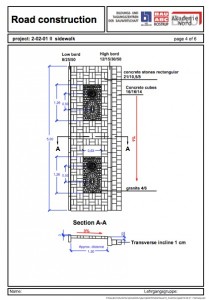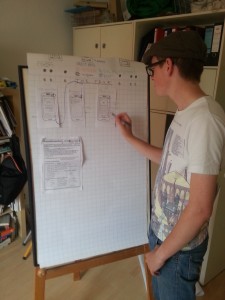Reflect is a free Android App for phones and tablets developed by students from Hochschule Karlsruhe (Karlsruhe University of Applied Sciences) for Pontydysgu as part of the Learning Layers Project.
The app is presently in closed beta but will be open for use by everyone in August 2013. If you would like more details please email graham10 [at] mac [dot] com.
We demoed the App at a workshop jointly hosted by the UK National Health Service developers network Handi and the Learning Layers project in Bradford last month and share here the report we produced on the feedback.
Aim:
- To elicit user feedback from developers and healthcare professionals
- Evaluate potential of the App
Background and Key Idea:
The original idea came from talking with a doctor in the UK at a Learning layers workshop. He explained how little time he had to reflect on his ongoing learning. The most time he had, he told us, was when he was in his car between meetings and visiting patients.
The Reflect App was originally designed to make the recording of learning, both formal and informal, easy.
The App is voice controlled and translates voice recordings into text.
Users can build a ‘stack’ of questions by typing them into a simple form on a web interface. Then they can use an Android Phone App which reads them the questions. They can skip to the next question, resubmit their answer or ask for help. The answers are automatically converted to text and can be downloaded to their own computer or tablet.
What we hoped to learn:
We were concerned to get feedback about:
a) The general idea and potential interest in the app
b) Usability and UI
c) Ideas for further development
Feedback from developers and healthcare professionals:
Negative feedback:
- GPs are concerned about the level of security, regarding sensitive data.
- Developers were concerned about quality of voice recognition and difficulties with background noise
Questions that were raised:
- What is the maximum recording time?
- Where does the voice recognition processing take place?
- Is an off-line mode possible?
- could Reflect be integrated into other systems (e.g. NHS)
- What are business models for future sustainability?
Positive feedback and further potential:
- Reflect could be a good tool to report back the first impressions on meetings
- A future approach could be to develop an APi to allow use with other systems
- Domains for groups to work together
- Reflect could be used for research purposes e.g surveys
- Learning tasks could be created for students (microanalysis)
- Link to Evernote
- Reflect provides strong support for scaffolding learning
Suggested Business Models:
- Advertising
- Premium domain accounts
- Develop market ins tacks of questions for different occupations / domain and license under revenue sharing model
What Next?
We are continuing to test the App on a closed beta and are working on an open beta release for Reflect.
We are hoping to get further developer support for:
a) Exploring off line potential
b) Developing a API
c) Porting to iOS
Evaluation of the activity:
From our point of view we were delighted with the critical and positive feedback. We especially noted the concern from external developers that there is a strong business model and suggest that this should be noted by other Learning layers development teams / design groups.
The workshop was very well organised. Whilst it would have been useful to have more health care professionals, the opportunity for engagement with so many developers and with commercial companies was extremely valuable.



